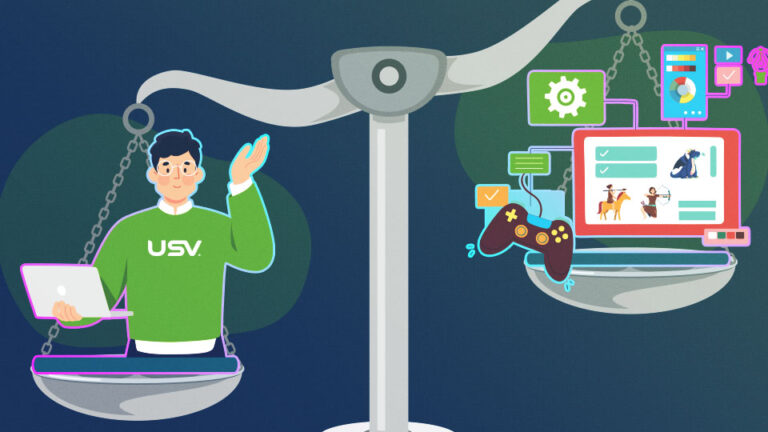This article originally appeared on The Hill. John Seely Brown, formerly Chief Scientist at Xerox and Head of Xerox Palo Alto Research Center (PARC), is co-founder of the Institute for Research on Learning and board member at University of Silicon Valley…
Our current education system is not working. It’s leaving graduates woefully unprepared for jobs in our modern-day world.
It doesn’t matter whom you ask, either: an Adecco Staffing survey says 74 percent of millennials say they feel unprepared for the workforce, while a PayScale survey said up to 60 percent of employers felt that millennials weren’t prepared for work.
The professional environment we’re used to — and the one we’re educated for — has changed. Instead of having one steady career, people today will have many jobs over a lifetime as the workforce evolves with rapidly accelerating technology.
The Global One-Room Schoolhouse: John Seely Brown (Highlights from his “Entrepreneurial Learner” Keynote at DML2012) from Connected Learning Alliance on Vimeo.
In fact, a LinkedIn study found that millennials will change jobs an average of four times within a decade of graduating college, and as frequently as three job changes within the first five years of graduation. To adapt to a constantly changing technological environment, the question becomes: how do you switch from moving like a steamship – setting course and continuing in the same direction for a long time – to maneuvering like a whitewater kayak – quickly changing course and adapting in the face of new obstacles?
We need our education to match the changing tides of time, and we can ironically do this by mixing the new with the old — in this case, the model of the one-room schoolhouse. I’m not suggesting we take education back to the 1800s, since we left that small model of education behind when it couldn’t keep up with the number of students. But when we combine the best of that model — collaborative, self-driven learning — with the tools of today, we get the modern one-room schoolhouse.
What is the Modern One-room Schoolhouse?
A good place to view the equivalent of a modern one-room schoolhouse is at community and innovation spaces like Hacker Dojo — or even the humble coffee shop.
These allow for informal gatherings, taking advantage of our unlimited access to resources online as well as peer mentoring to drive successful projects to the finish line.
The modern one-room schoolhouse provides students with the right environment to develop three particular skills critical for professional success today: independence, analytical thinking and collaboration.
Put Students in the Driver’s Seat of Their Education
In the modern one-room schoolhouse, students feel responsible for their own education, becoming entrepreneurial learners in the process. The entrepreneurial learner is constantly looking for ways to learn new things by employing new resources, peers and potential mentors.
Teachers can be instrumental in this shift of learning by replacing lectures with an orchestrated learning style. They need to encourage students to use the tools and technologies at their disposal — like Pinterest for storing reference materials — so students can be self-sufficient in finding insights into their curiosity.
The Connected Learning Research Network recently explored how students connected and learned through the video games LittleBigPlanet and StarCraft. As part of the study, cultural anthropologist Mimi Ito dug into the relationship between student and teacher. “For teachers in schools and classroom learning, there’s still an incredibly important role to play, which is about giving kids access across the board to a baseline set of standards, literacies [and] expectations about what they need to participate in contemporary society: to be reflective and to also take opportunity of the fact that you really have kids and adults in a shared space,” said Ito in an Edutopia video series. “That gives kids an opportunity to reflect on things in their everyday life — not just about being immersed in it all the time.”
Develop and Practice Analytical Thinking
Students need to work together to decide to act on information, and even guess wrong at times, like they did in the one-room schoolhouse. This leads to deeper critical reasoning in order to contextualize the information they’re absorbing.
Students will work on group projects to deliver results while grappling with constraints on resources, timelines and talent. The internet makes this infinitely more effective, because a group of learners can find new knowledge online to expand their concepts. When they encounter “fake news,” students will have the means to practice their analytical thinking to decide whether to question or accept what they read.

Consider Ann Pendleton-Jullian’s studio classes at Georgetown University and Ohio State University. The course takes an interdisciplinary approach to envisioning what higher education will look like in the year 2033. Ann has inverted the system from the old way of providing a course with a lab, to providing a lab-based class with courses.
Instead of learning just from the professor, students work individually and in teams to pull resources to aid in their collective design of the future university. Ann acts as a mentor and is just one of many resources available to the students as they work toward a common goal.
Foster Collaboration and Diverse Thinking
In the modern one-room schoolhouse, older students and younger students must work alongside each other, teaching and finding solutions together. Studio know-how and project-based learning are brilliant at creating a collaborative environment where this critical thinking can occur.
One example of this happening in today’s educational environment is the game studio course at University of Silicon Valley. Students take on leadership and production roles, working together and learning from each other as they complete projects on professional-grade equipment.
These students are entrepreneurial learners, and learn how to be successful by working with students from different disciplines and backgrounds.
The modern one-room schoolhouse can revolutionize education by giving students the means to question and improve their knowledge and skills through teamwork and analytical, self-driven learning and thinking.
With the right educational opportunities and the skills learned from them, students can go on to become employees who can shine in the professional world.
Now that’s something all one-room schoolhouses — past and present — can celebrate.


